Systematics of 'lithistid' tetractinellid demosponges from the Tropical Western Atlantic-implications for phylodiversity and bathymetric distribution
- PMID: 33859870
- PMCID: PMC8020874
- DOI: 10.7717/peerj.10775
Systematics of 'lithistid' tetractinellid demosponges from the Tropical Western Atlantic-implications for phylodiversity and bathymetric distribution
Abstract
Background: Among all present demosponges, lithistids represent a polyphyletic group with exceptionally well-preserved fossils dating back to the Cambrian. Knowledge of their recent diversity, particularly in the Tropical Western Atlantic Ocean (TWA) where they are common in deep waters, is scarce making any comparison between present and past major 'lithistid' faunas difficult. In addition, the lack of sufficient molecular and morphological data hamper any predictions on phylogenetic relationships or phylodiversity from this region. The Harbor Branch Oceanographic Institute (HBOI, Fort Pierce, Florida) holds the largest collection of TWA lithistid sponges worldwide, however, the majority remain to be taxonomically identified and revised.
Principal findings: In this study we provide sequences of 249 lithistid demosponges using two independent molecular markers (28S rDNA (C1-D2) and cox1 mtDNA). In addition, a morphological documentation of 70 lithistid specimens is provided in the database of the Sponge Barcoding Project (SBP). This integrated dataset represents the largest and most comprehensive of the TWA lithistids to date. The phylogenetic diversity of 'lithistid' demosponges in the Bahamas and Jamaica are high in comparison to other TWA regions; Theonellidae and Corallistidae dominate the fauna, while Neopeltidae and Macandrewiidae are rare. A proposed tetractinellid suborder, one undescribed genus and several undescribed species are recognized and the Pacific 'lithistid' genera, Herengeria and Awhiowhio, are reported from the TWA for the first time. The higher-taxa relationships of desma-bearing tetractinellids are discussed and topics for revision suggested.
Conclusion: This first integrative approach of TWA 'lithistid' demosponges contributes to a better understanding of their phylogenetic affinities, diversity and bathymetric distribution patterns within the TWA. As in the Pacific, the TWA 'lithistid' demosponges dominate deep-water habitats. Deeper taxonomic investigations will undoubtedly contribute to a better comparison between present major 'lithistid' faunas and their fossil record in the Mesozoic.
Keywords: Integrative taxonomy; Lithistiddemosponges; Tetractinellida; Tropical Western Atlantic.
©2021 Schuster et al.
Conflict of interest statement
The authors declare there are no competing interests. This document reflects only the authors’ view and the Executive Agency for Small and Medium-sized Enterprises (EASME) is not responsible for any use that may be made of the information it contains.
Figures




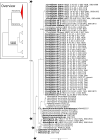

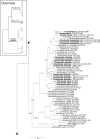
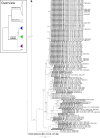



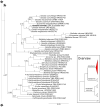



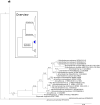


Similar articles
-
Deceptive desmas: molecular phylogenetics suggests a new classification and uncovers convergent evolution of lithistid demosponges.PLoS One. 2015 Jan 7;10(1):e116038. doi: 10.1371/journal.pone.0116038. eCollection 2015. PLoS One. 2015. PMID: 25565279 Free PMC article.
-
Hydroids (Cnidaria, Hydrozoa) from Mauritanian Coral Mounds.Zootaxa. 2020 Nov 16;4878(3):zootaxa.4878.3.2. doi: 10.11646/zootaxa.4878.3.2. Zootaxa. 2020. PMID: 33311142
-
New lithistid sponge of the genus Sollasipelta (Porifera, Demospongiae,Tetractinellida, Neopeltidae) from submarine caves of the Ryukyu Islands,southwestern Japan, with redescription of S. sollasi.Zootaxa. 2023 May 16;5285(2):293-310. doi: 10.11646/zootaxa.5285.2.4. Zootaxa. 2023. PMID: 37518705
-
Pleurotomarioidean gastropods.Adv Mar Biol. 2002;42:237-94. doi: 10.1016/s0065-2881(02)42015-9. Adv Mar Biol. 2002. PMID: 12094724 Review.
-
Global diversity of marine isopods (except Asellota and crustacean symbionts).PLoS One. 2012;7(8):e43529. doi: 10.1371/journal.pone.0043529. Epub 2012 Aug 31. PLoS One. 2012. PMID: 22952700 Free PMC article. Review.
Cited by
-
An annotated and illustrated identification guide to common mesophotic reef sponges (Porifera, Demospongiae, Hexactinellida, and Homoscleromorpha) inhabiting Flower Garden Banks National Marine Sanctuary and vicinities.Zookeys. 2023 May 11;1161:1-68. doi: 10.3897/zookeys.1161.93754. eCollection 2023. Zookeys. 2023. PMID: 37234741 Free PMC article.
-
Rock sponges (lithistid Demospongiae) of the Northeast Atlantic seamounts, with description of ten new species.PeerJ. 2020 Apr 7;8:e8703. doi: 10.7717/peerj.8703. eCollection 2020. PeerJ. 2020. PMID: 32292645 Free PMC article.
References
-
- Bergquist PR. Sponges. Hutchinson University Library. University of California Press; Berkeley and Los Angeles: 1978. pp. 1–268.
-
- Carballo JL, Bautista-Guerrero E, Cárdenas P, Cruz-Barraza JA, Aguilar-Camacho JM. Molecular and morphological data from Thoosidae in favour of the creation of a new suborder of Tetractinellida. Systematics and Biodiversity. 2018;2018:1–10.
-
- Cárdenas P, Rapp HT, Schander C, Tendal OS. Molecular taxonomy and phylogeny of the Geodiidae (Porifera, Demospongiae, Astrophorida) –combining phylogenetic and Linnaean classification. Zoologica Scripta. 2010;39:89–106.
LinkOut - more resources
Full Text Sources
Other Literature Sources
Research Materials
Miscellaneous

